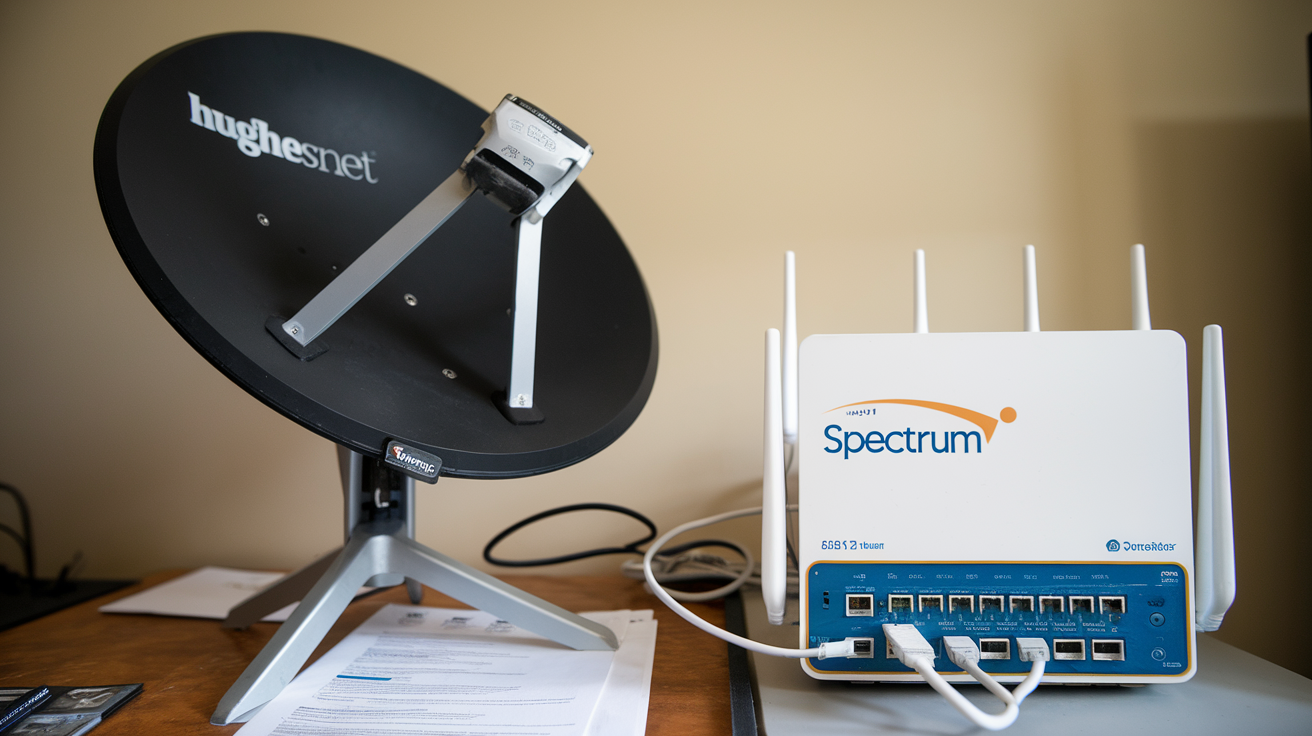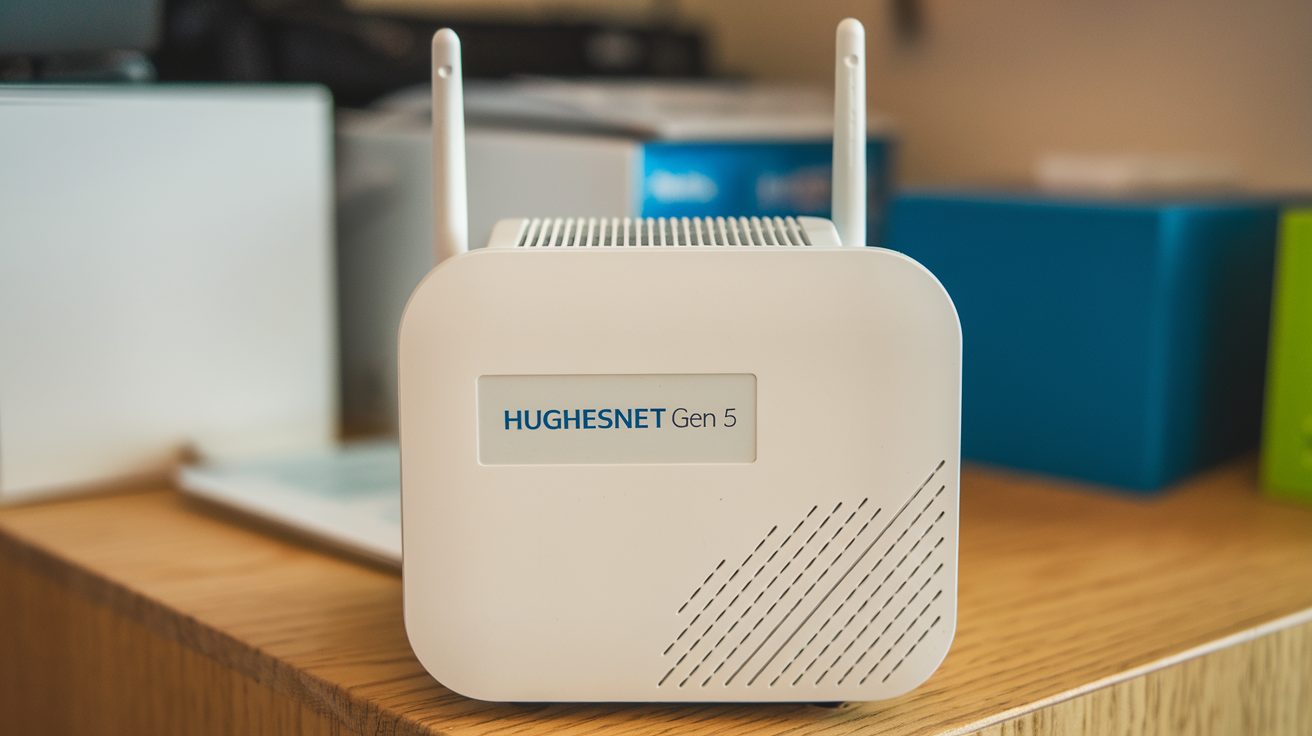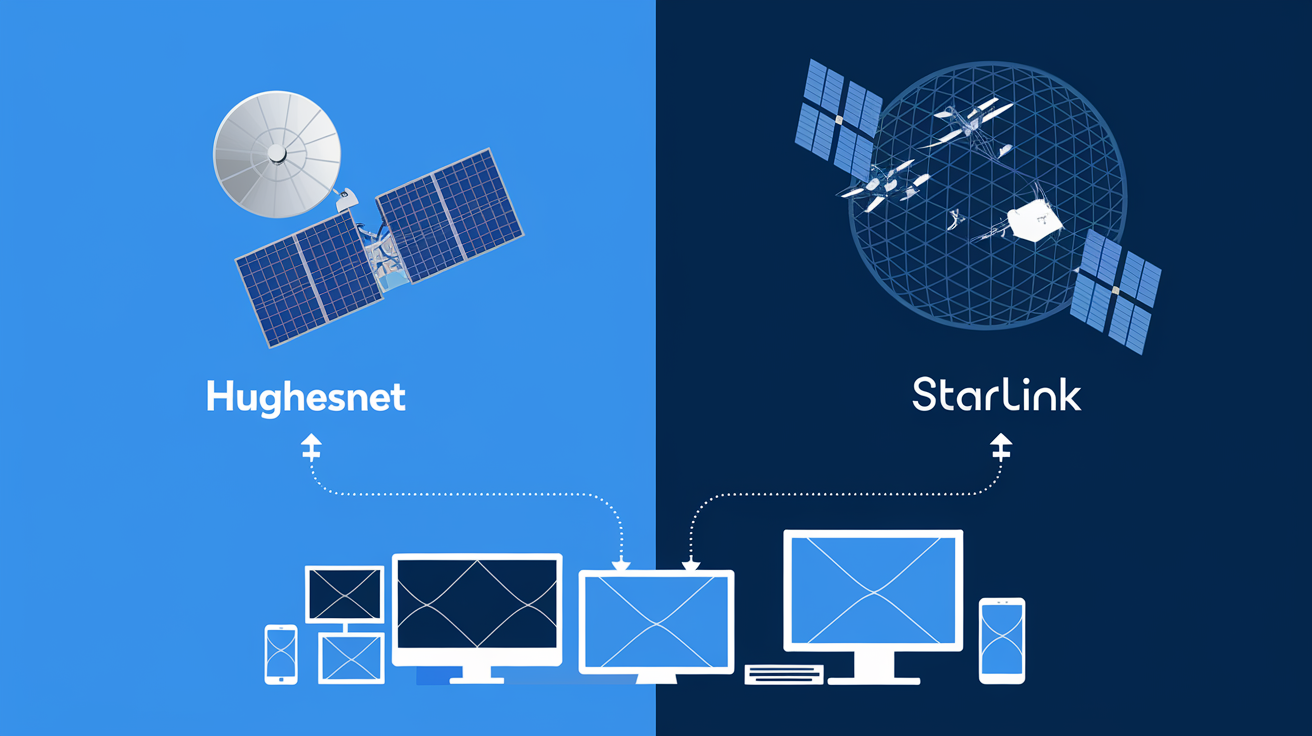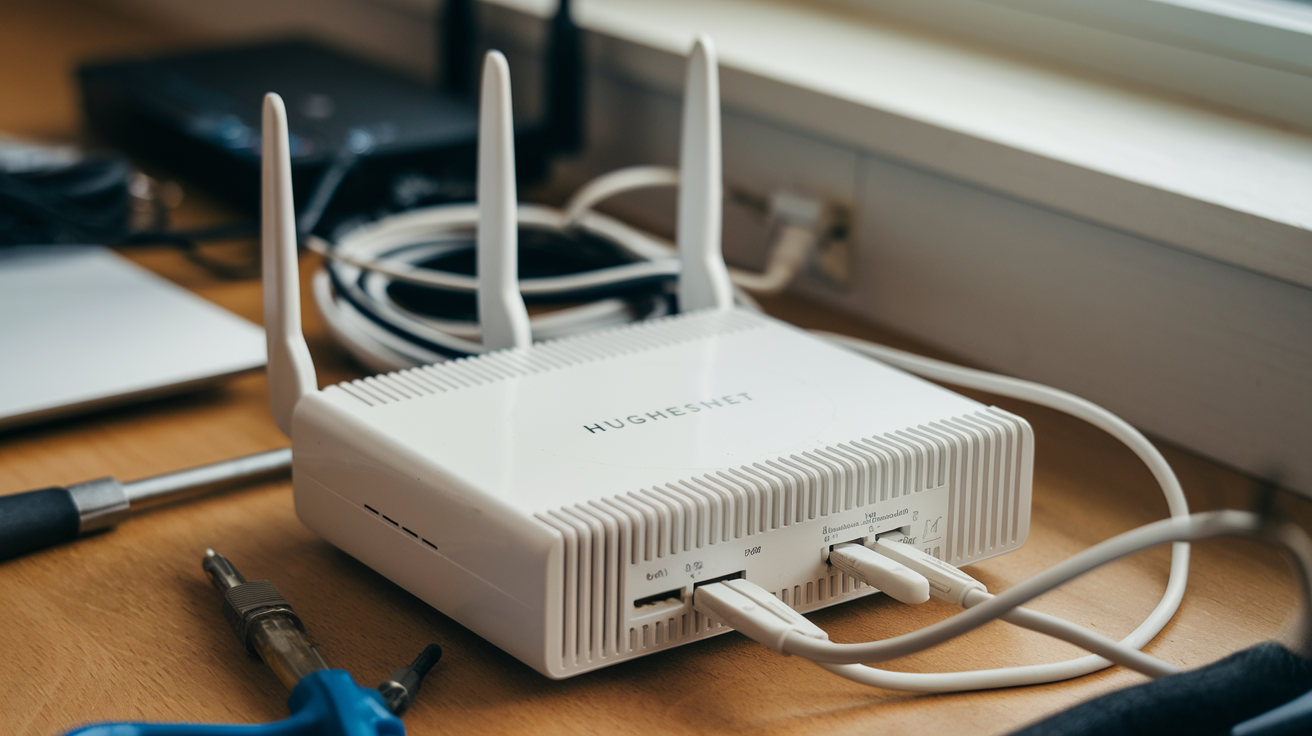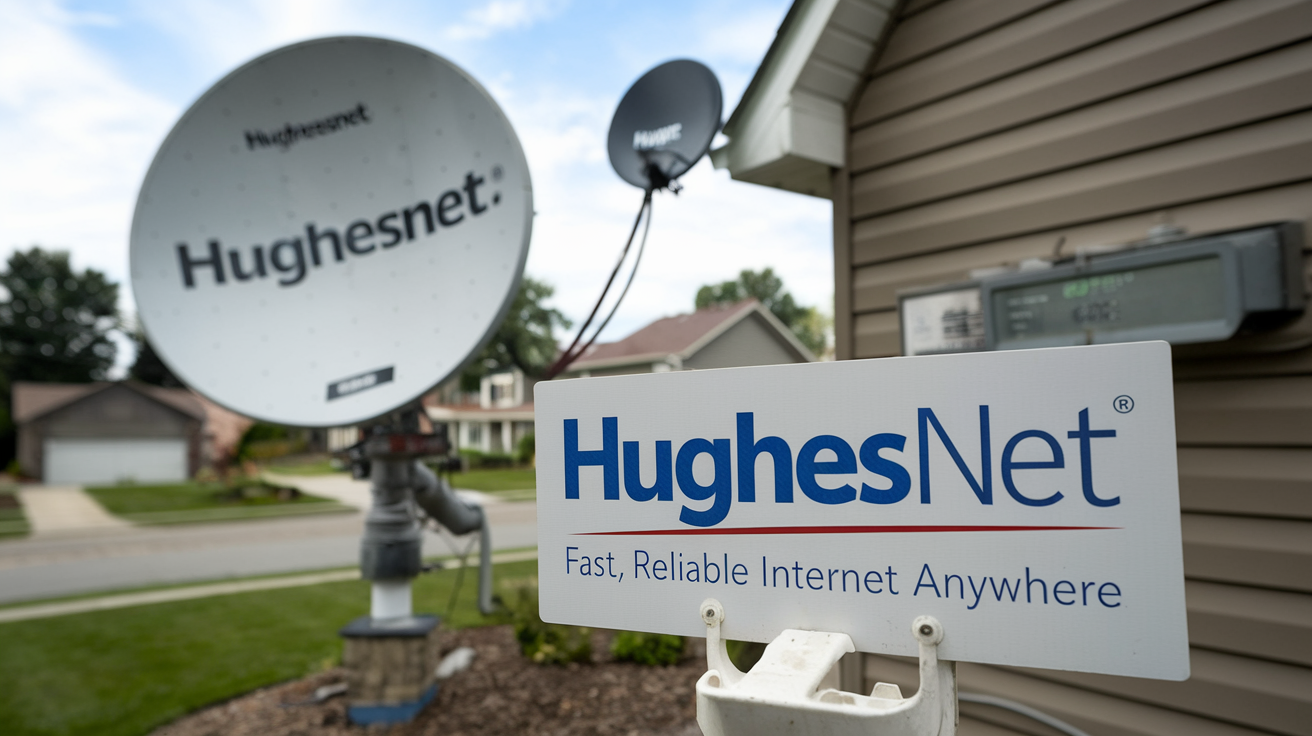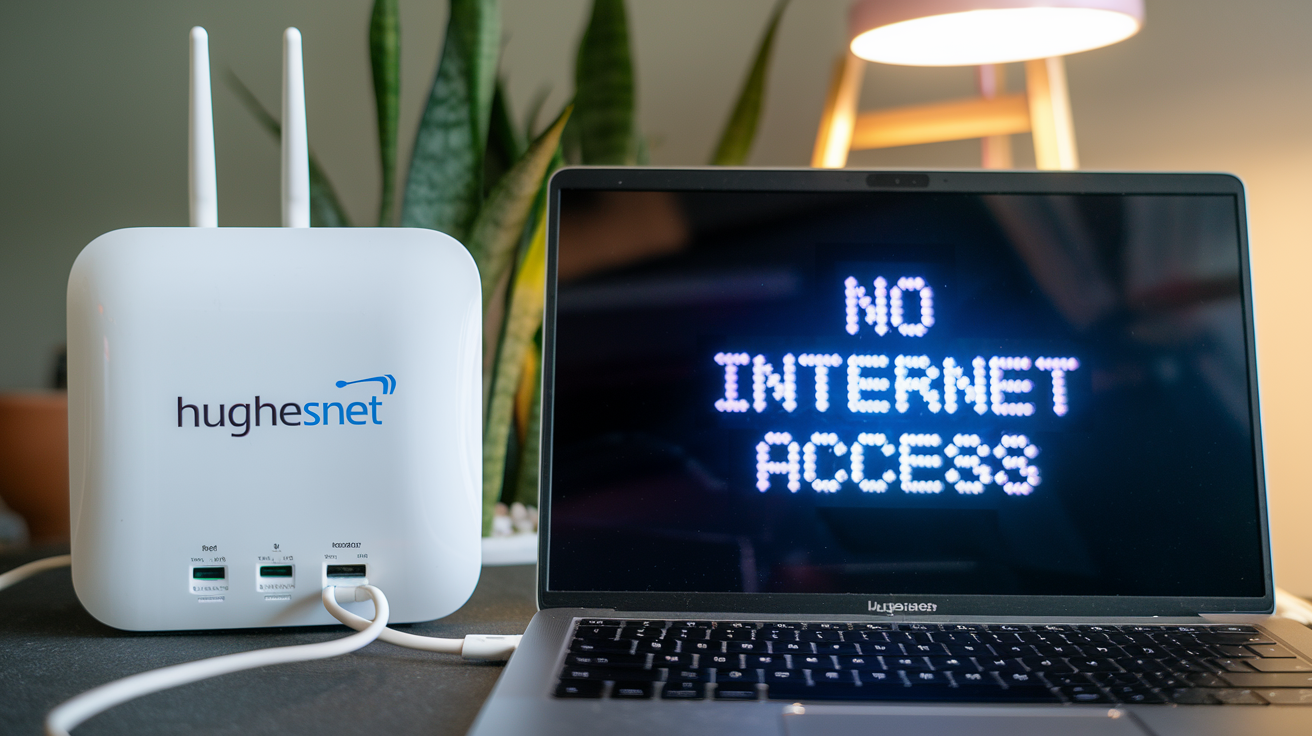
Reliable internet service is very important in today's world. If your HughesNet internet connection has issues, it can be a real hassle. This guide will help you troubleshoot common HughesNet internet problems. We will look at how to find connectivity issues, some first steps for troubleshooting, how to align your satellite dish, how to fix Wi-Fi problems, and how to manage data usage to improve your internet experience.
Identifying Common HughesNet Internet Issues
HughesNet internet can have problems, like any satellite internet service. These problems can come from equipment issues or even bigger service disruptions. The first step to fixing them is to recognize the signs. Slow internet speed, connections that drop, and trouble getting to certain websites are clear signs that something might be wrong with your HughesNet internet connection.
After you notice a problem, you need to figure out if it is coming from your side or if it’s a larger service issue. Knowing this will help you choose the best way to troubleshoot the problem.
Symptoms of Connectivity Problems in HughesNet Services
Connectivity issues with HughesNet services can show up in many ways. One common sign is slow internet speed, which makes web pages load slowly and causes online videos to buffer a lot. Another sign is spotty connectivity, where you face frequent disconnections or see the internet signal changing. You may find it hard to access some websites or online services while others work well, which points to a possible problem with your HughesNet service.
Looking at the LED lights on your HughesNet modem can also help. If the system light is off or blinking in an unusual way, it might mean there is a problem with your modem or the HughesNet service connection. Also, check the HughesNet System Control Center. If you see an error message or alert about your satellite signal or connection, it's important to dig deeper into it.
Before assuming there is an issue with HughesNet service, it's wise to test your internet connection on different devices. If the problem continues on various devices, it likely indicates an issue with your internet service and not just one device.
Distinguishing Between Service Disruptions and General Internet Problems
It is important to know the difference between service disruptions and problems from your setup. This understanding helps in effective troubleshooting.
First, check your HughesNet System Control Center. Look for any alerts about outages or planned maintenance in your area. These alerts can mean there is a service disruption outside your control.
Another option is to visit online outage reporting sites, like Downdetector. These sites show user reports about HughesNet outages. They help indicate where and how big the internet service issues are. If many users nearby have similar problems, it is likely a service disruption with the HughesNet network.
Lastly, keep in mind that HughesNet, like other internet service providers, uses ground stations and satellites. Heavy cloud cover or bad weather can interrupt satellite internet signals for a short time. If you think the weather is causing issues, waiting for it to clear up could be the best choice.
Initial Troubleshooting Steps for HughesNet Internet
When you have HughesNet internet problems, begin by trying some basic troubleshooting steps. These simple actions can fix many common connectivity issues. This saves you the time and trouble of reaching out to customer support. Checking basic possible causes first can make your troubleshooting easier.
By carefully going through these first steps, you can often find the problem's source and quickly restore your internet connection.
Restarting Your HughesNet Modem and Devices
Restarting your HughesNet modem and devices is like giving your setup a quick reset. This helps fix temporary problems and refreshes your connection to the HughesNet service. To restart, first unplug your HughesNet modem and router from their power sources. Wait for at least five minutes to let them fully switch off and clear out any leftover cache.
After you wait, plug your HughesNet modem back in first. Wait for it to start up completely, then plug in your router. Give it a couple of minutes to connect with the modem and reset your network. Once everything is back on, check your internet connection to see if it works better.
If you still have problems after restarting your modem and router, try restarting the devices you use to connect to the internet. Sometimes, little issues with your devices can cause trouble connecting to the Wi-Fi network. Turning them off and on again can help fix any of these problems.
Checking for HughesNet Service Outages in Your Area
Before you try more complicated troubleshooting steps, it’s a good idea to check if there are any HughesNet service outages in your area. Outages might happen for different reasons, like technical problems, planned maintenance, or bad weather. You can check for outages by visiting the HughesNet website or calling their customer service.
The HughesNet website could have a specific section for service alerts or outages. Look for any notices about maintenance schedules or service problems in your area. If you don’t see anything online, reaching out to HughesNet customer service is a good option. Their team can give you real-time updates about any outages and how long they might last.
Keep in mind that if the outage is due to a technical issue or maintenance, there isn’t much you can do except wait for HughesNet to fix it. Still, by checking for service outages, you can learn about the reason for the disruption and when your internet service may return.
Optimizing HughesNet Satellite Dish Alignment
HughesNet's satellite internet service needs good dish alignment. Your satellite dish is how your modem gets internet signals from HughesNet's satellites. To keep a strong connection, it's important that your dish is set up correctly. If the dish is moved or turned, it can weaken the signal. This change can hurt your internet speed and reliability.
It's important to know what affects dish alignment and how to fix it. When your satellite dish is aligned right, you can get the best signal strength and face fewer connectivity problems.
Importance of Proper Dish Placement and Orientation
The performance of your HughesNet internet service depends a lot on where and how you set up your satellite dish. The dish must have a clear view of HughesNet's satellites in orbit to get internet signals properly. Things like trees, buildings, or heavy cloud cover can block this view. This may lower signal strength, which can slow down your internet speed or cause your connection to drop.
How the dish is aimed is very important too. If it is even a little off, it can hurt the quality of the signal. A well-aimed dish points directly at the correct satellite. This helps get the best signal, which is key for fast internet speed and performance.
Since proper dish placement and direction are so important, you should check your dish now and then. This is especially true after bad weather that might have moved it. Keep the area around the dish clear of things that can block it. Also, watch your internet speed for any signs that the signal quality has dropped, which might mean the dish is not aligned well.
Step-by-Step Guide to Adjusting Your Satellite Dish for Better Reception
Adjusting your satellite dish is something you should only do if you are okay with using simple tools and working at heights. If you ever feel uncertain or unsafe, it is better to reach out to HughesNet. They can send a trained network technician to help you.
If you choose to adjust the dish yourself, be careful and follow these steps to make the reception better:
-
Consult the HughesNet System Control Center: This will give you real-time readings of signal strength to help with your adjustments.
-
Loosen the dish mount: Gently loosen the bolts that hold the dish. This helps in making adjustments, but don’t remove the dish completely.
-
Make small adjustments: Slowly move the dish in little steps, both up and down and side to side. Keep an eye on the signal strength in the System Control Center.
-
Tighten the mount: After you find the strongest signal, make sure to tighten the bolts of the dish mount to fix its new position.
-
Test internet speed: After you adjust the dish, run an internet speed test to check if reception has improved.
Remember, fixing the satellite dish takes time and care. If you cannot get better reception or face more problems, contact HughesNet for professional assistance.
Addressing HughesNet Wi-Fi Connectivity Issues
HughesNet offers satellite internet service, but your home Wi-Fi network depends on your router. These are separate systems, but they work together to give you internet access. If you have problems with your router or its settings, it can cause issues with your Wi-Fi, even if the HughesNet service is working well.
To fix Wi-Fi issues, it's important to improve where your router is placed and make sure your devices are connected properly to the network. By doing this, you can boost your internet signal strength and make your internet connection more reliable.
Best Practices for Router Placement to Enhance Signal Strength
The spot where you put your router is very important for how well your HughesNet Wi-Fi signal works in your home. Choosing a good location for your router can improve signal strength and reduce dead zones. It is best to place your router in a central area of your home. This way, the signal doesn’t have to travel far, giving you better coverage.
Try to keep your router off the floor, on a shelf or table. The higher you place the router, the better the signal spreads, and this helps avoid interference from furniture and appliances. Don't put your router near walls, especially outside walls or those with metal, as they can block or weaken your Wi-Fi signals. Also, keep the router away from electronic devices like microwaves, cordless phones, and Bluetooth speakers, which can interfere with the signal.
Think about the size and shape of your home, too. If you have a big house with more than one floor, you might need extra Wi-Fi extenders or mesh networks to cover everything. By placing your router carefully and taking your home’s layout into account, you can build a stronger and more reliable Wi-Fi network.
How to Reconnect Devices to HughesNet Wi-Fi After Troubleshooting
After fixing problems with your HughesNet Wi-Fi network, you will need to connect your devices again. This will help them get back on the internet. To do this, you need to find your network name (SSID) and enter the right password.
To reconnect, go to the Wi-Fi settings on your device. Look for the SSID of your HughesNet network. This is a special name that you created for your network. Once you find it, select it and type in the password when asked. If you do not remember your Wi-Fi password, you can usually find it on a sticker on the back or bottom of your router.
You can also get the password from your router's settings page using a web browser. If you changed the default password and forgot it, you might have to reset your router to factory settings. This will remove all your custom settings. After the reset, you can set up your network again with a new password. Once your devices are on the Wi-Fi network, check the connection to make sure everything is working well.
Managing HughesNet Data Usage to Improve Performance
HughesNet, like many satellite internet providers, has data caps or limits on how much data you can use. When you reach your monthly data limit, you could face slower speeds. This slowing down is called throttling. It helps reduce traffic on the network and keeps service steady for everyone.
Understanding your data allowance and what happens when you go over it is important for managing your HughesNet service. By using ways to track and control your data usage, you can avoid reaching your monthly limit. This helps you keep consistent internet speeds during the billing cycle, so you can have a smooth time online.
Understanding How Data Limits Impact Internet Speed
Internet speed is the rate at which data moves between your device and the internet. With a high HughesNet internet speed, web pages load fast, video streaming is smooth, and downloads finish quickly. But the speed you see can change based on several things. These include your HughesNet plan and how you use data.
Many HughesNet plans have data limits. These limits set how much data you can use each month at the best speeds. If you reach this limit, your internet speed may drop. This drop, called throttling, usually slows your speed to around 1-3 Mbps. This can make surfing the internet slow and can make streaming difficult.
You will notice the effects of data limits most during heavy tasks like streaming HD videos or downloading big files. It is a good idea to check your data usage using the HughesNet System Control Center or mobile app. This way, you can stay within your data allowance and avoid speed throttling.
Strategies for Data Management and Avoiding Speed Throttling
Proactively managing your data usage is key to preventing speed throttling and ensuring optimal internet performance with your HughesNet plan. Understanding your usage patterns and implementing strategies to conserve data will go a long way. Start by tracking your data usage. Use the tools provided by HughesNet to monitor how much data you consume each day and identify any activities that contribute to high usage.
|
Data Management Strategy |
Description |
|---|---|
|
Data-Saving Mode |
Utilize data-saving features available in browsers and apps, compressing data and reducing consumption. |
|
Schedule Downloads |
Download large files during off-peak hours when network congestion is lower and throttling is less likely. |
|
Optimize Streaming |
Adjust the resolution of streaming services to reduce data consumption. Opt for standard definition over high definition. |
|
Wi-Fi Management |
Limit the number of devices connected to your Wi-Fi network to reduce background data usage. |
Furthermore, consider adjusting your online behavior. Limit activities that consume large amounts of data, like online gaming or downloading software updates, to times when you're close to the beginning of your billing cycle and haven't consumed much of your data allowance. By adopting these strategies, you can effectively manage your data and minimize the likelihood of experiencing throttled internet speeds.
Conclusion
In conclusion, fixing HughesNet's internet problems can make your online experience much better. By following the steps to find and fix connection issues, aligning your satellite dish correctly, improving Wi-Fi, and managing your data usage, you can have smoother and more reliable internet access. Remember, a good internet connection is important for work and play. If the problems keep coming up after basic troubleshooting, reach out to HughesNet customer support for further assistance. This way, your internet service will run well. Stay connected and get your work done with a stable HughesNet internet connection.
Contact (888) 797-3141 to Activate Your Hughesnet Internet Connection!
